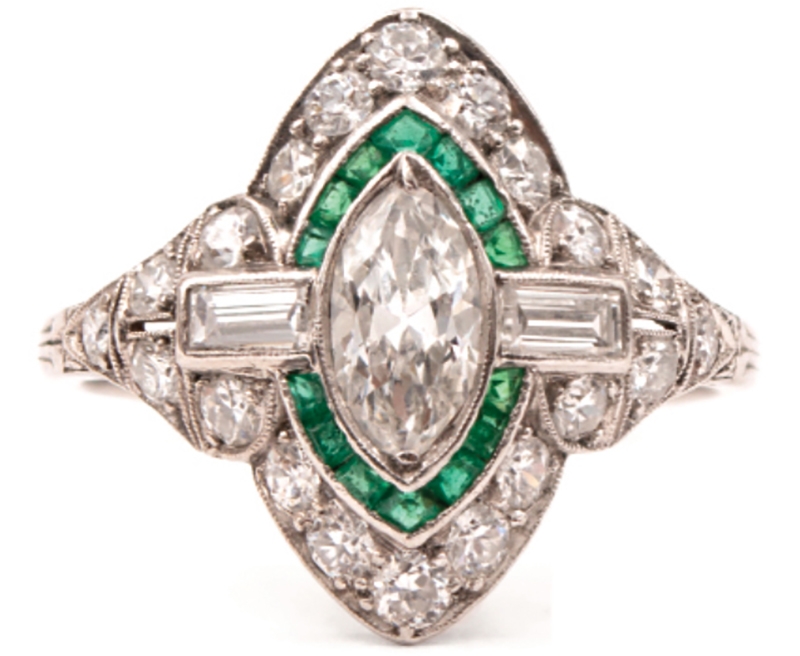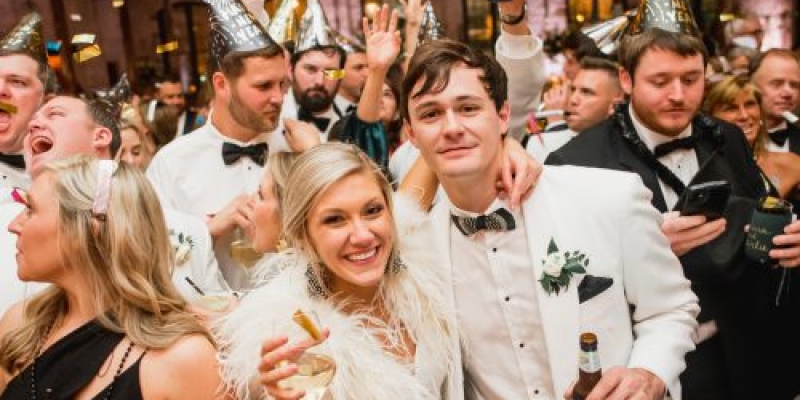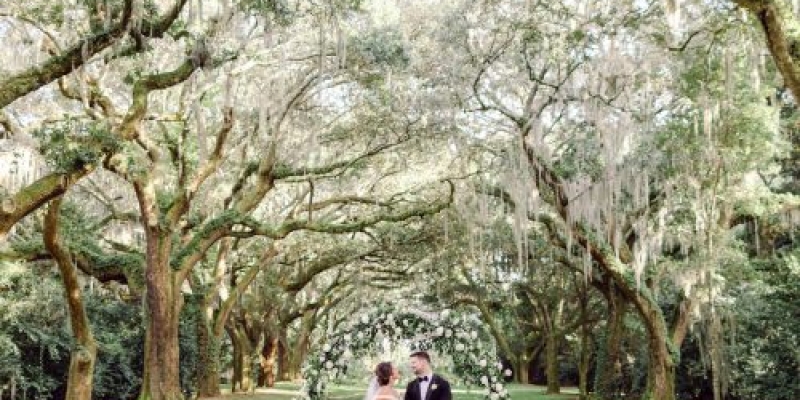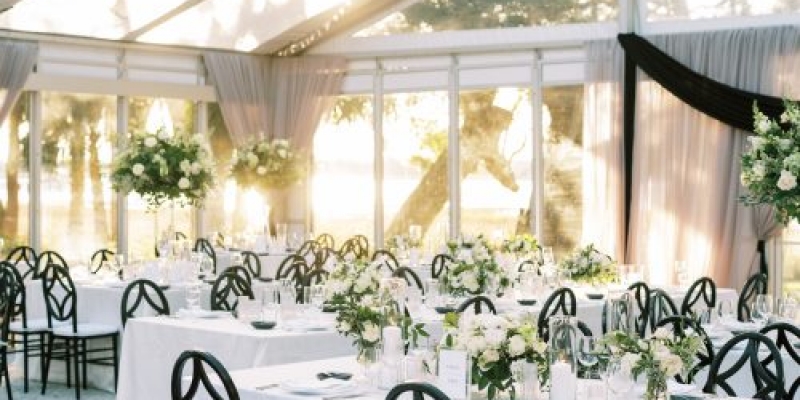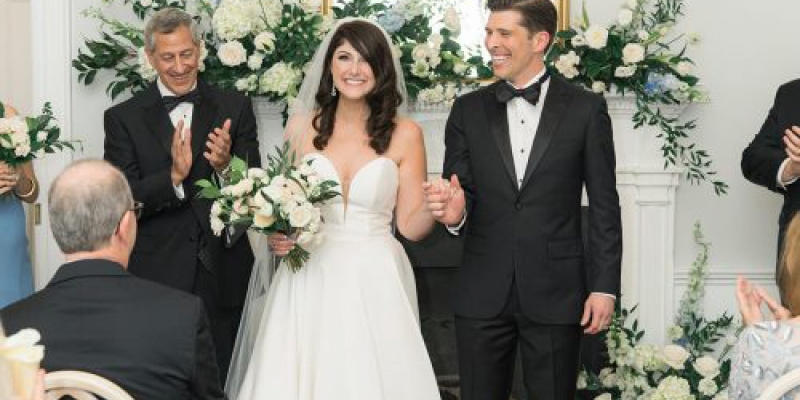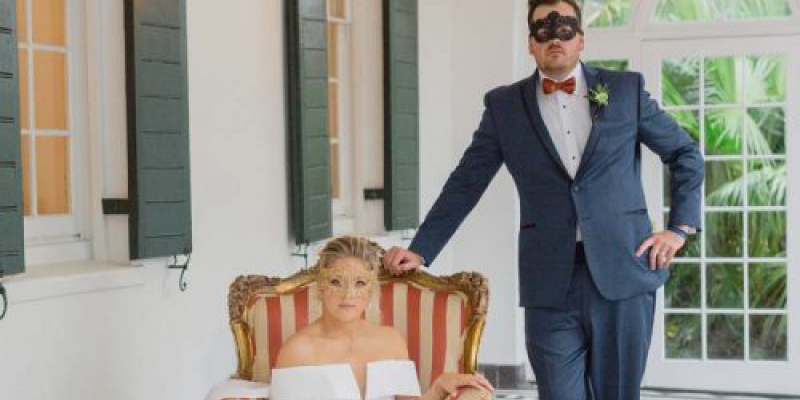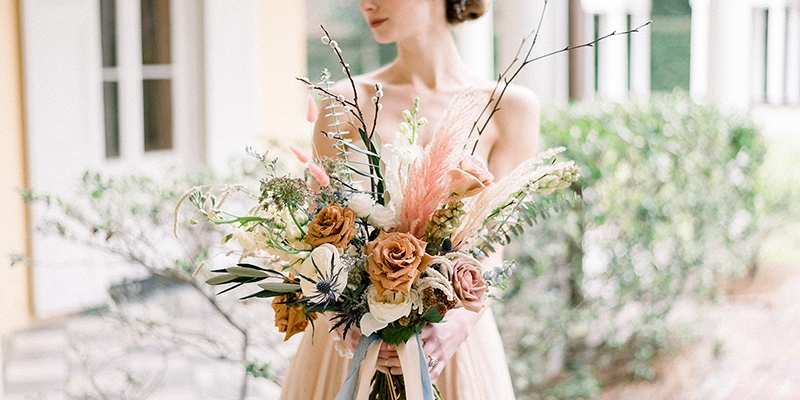Vintage marquise brilliant-cut diamond (.50 carat) with emeralds in platinum from Sandler’s Diamonds & Time ($4,600)
Single Stone repurposes antique diamonds and recycled metal into vintage-inspired settings, like the “Caroline Ring” (middle) featuring an emerald-cut diamond (2.08 carats) with baguette accents set in yellow gold ($32,500)
Single Stone
For those who love the idea of an heirloom piece but appreciate the durability of a new setting, a Single Stone ring may be the ticket. Los Angeles husband-and-wife team Ari and Corina Madilian started the line 15 years ago using repurposed diamonds in vintage-inspired modern designs. “There’s more consideration with an old piece,” says Kathleen Hay of Croghan’s Jewel Box, where Single Stone is the jeweler’s best-selling brand. “The great thing about the line is that the integrity of the metal is new. So you get the peace of mind of a new ring with the look and feel of an antique.” And while the brand’s collection is always expanding, customizing a ring is an option as well (allow up to 12 weeks for delivery). Another idea: Have Single Stone reimagine your own heirloom stones into a new setting. Visit Croghan’s March 3&4 for an in-store event with the Madilians to find out more.
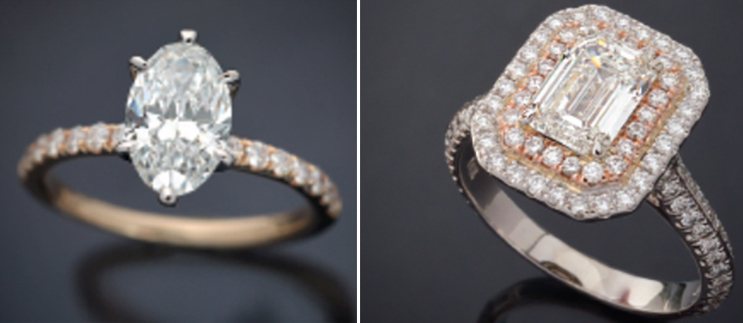
Emerald-cut diamond (1.5 carats) in custom white and rose gold halo setting (price upon request) from John Marmo Diamonds
Custom
A surefire way to get exactly the ring you want is to have it custom-made. Not sure if you’re leaning emerald or cushion cut? Jeweler John Marmo suggests bringing in three or four photos of rings you love. No pictures? No problem. “I show them a selection of 25 different rings, and they can pick the design elements they like.” But it never hurts to consider the stone shape, setting, and carat range before your appointment with a jeweler. Most importantly, a couple should be on the same page budget-wise before they sit down with a jeweler to avoid what could be a very uncomfortable discussion (he’s been there). While more and more couples choose engagement rings together, if you’re planning a surprise, be sure to get your intended’s ring size as well. “I haven’t had any instance where the girl doesn’t like what the guy selected,” Marmo says. “That’s my favorite part of my job.”
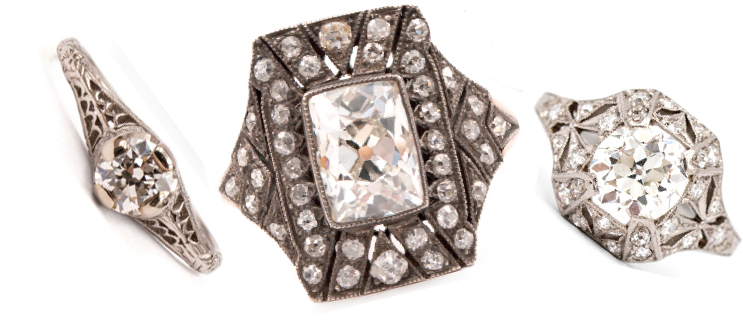
(From left to right) Estate European-cut diamond (approximately .50 carat) set in platinum ($1,899); antique Russian radiant-cut diamond (3.05 carats) set in platinum and 18k gold with single cut diamond accents ($49,650); Art Deco European-cut diamond (1.40 carats) in platinum ($13,998) from Sandler’s Diamonds & Time
Estate
While the craze for heirloom rings is nothing new, the criteria for what constitutes an engagement piece has evolved. “There’s no defined parameters,” says Greg Sandler of Sandler’s Diamonds & Time. “These days, what was a cocktail ring has transitioned into being an engagement ring.” He adds that couples tend to look for a design they like among the jeweler’s collection of estate (up to 50 years old), vintage (50 to 100 years old), or antique (more than 100 years old), but many are struck by a connection to a piece. “Most people are buying a feeling,” he says. Indeed, estate and older rings were often made custom for whoever was buying them. “Diamonds now are all cut with [specific] cuts in mind. Back then, they were cut for the weight, and they would craft the ring around the stones available,” Sandler explains. As a result, he says, “No two vintage or antique rings look the same, that’s what makes them unique.”
From this day forward: CARE Jewelers recommend having an engagement ring professionally cleaned and inspected annually. In between checkups, Hay suggests cleaning it with a special solution sold by jewelers or with warm soapy water and a toothbrush. For older rings, Sandler recommends having them checked at least twice a year. “Maintenance is important. That’s why these pieces can survive 50 to 100 years,” he says. And be sure to take your ring off if you’re doing anything active, like gardening or playing golf, lest a diamond escape from a loosened prong. “These rings were made for people who didn’t do these things,” Sandler says. “In the early 1910s, they weren’t going to the gym.”
